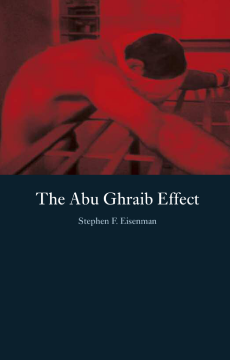
Additional Information
Book Details
Abstract
The photographs of torture at Abu Ghraib prison aroused worldwide condemnation—or did they? Opinion polls showed that most citizens of the United States were unmoved by the images. One reason for this relative lack of a public outcry may be the nature of the Abu Ghraib pictures themselves and what Stephen F. Eisenman terms “the Abu Ghraib effect.” By showing prisoners engaging in sexual acts, Eisenman asserts, the photos make the men look like enthusiastic participants in their own interrogation and torture. Further, these scenes repeat an ancient stereotype: the “pathos formula,” in which victims of war are shown welcoming their own punishment.
In this highly original analysis, Eisenman shows the pathos formula at work in the Abu Ghraib photos, and he describes its long history, exploring the motif’s appearance in imperial Greek and Roman Art, in the sculpture and painting of Michelangelo, and in Baroque paintings of saints and martyrs. The author also describes the equally long history of artistic protest against the formula by such diverse artists as William Hogarth, Francisco Goya, Pablo Picasso, Ben Shahn, and Leon Golub.
The Abu Ghraib Effect reveals how the pathos formula has dulled public responses to images of torture, and also urges a more effective use of political images in the fight against the so-called “war on terror.”
“Eisenman’s concepts and questions constitute a challenging discourse on politics and art.” —Art in America
“This brilliantly argued volume should be read by all art historians.”—Art Book
“The Abu Ghraib Effect . . . traverses revolutionary terrain in its unraveling of the function of artistic metaphor in the justification of imperialist power.” —Media–Culture Review
“Writing about events that never, ever should have happened is no small challenge, even for the citizens of a us culture that now flirts with ‘representing the unrepresentable’ and disputes any evidential role for photography. Nonetheless, Stephen Eisenman has taken up this daunting challenge with an unflinching analysis that will long endure—as will our stark memories of the horrors unleashed by the administration of George W. Bush.”--David Craven, author of Art and Revolution in Latin America, 1910 – 1990
— David Craven
“In The Abu Ghraib Effect Stephen F. Eisenman claims a deeper historical root for displays of pride and complicity in torture and murder. He traces what he calls the 'pathos formula', manifest in images of the beautiful death and the sublimation of suffering in the subordinate. . . . Eisenman gallops through the phenomenology of Western Art, the socio-geographic history of Europe and perception of Muslim cultures.” — Sally O'Reilly, Time Out London
"Scholarly, succinct, and flush with photos, Eisenman's analysis is art history at its most compelling." — Brendan Driscoll, Booklist
"As a professor of art history he cleverly argues that the disturbing images that came out of this prison are part of a well-established artistic tradition." — Glasgow Herald
"The Abu Ghraib Effect asks how pictures of such surpassing horror can vanish in plain sight, and concludes that their disappearance is largely a matter of the very centrality of such images to Western art. . . . This argument convinces, up to a point, and Eisenman is surely right to adduce an affinity between the torture photographs and a venerable motif of Western art . . . his contention that the pathos formula perhaps constitutes the only real unity of that ostensibly humanist and progressive tradition is audacious and illuminating." — Brian Dillon, Art Review
"There is much in this book to commend. It provides, for instance, a model of engaged, critical scholarship, one that makes art history relevant to today's political concerns. Eisenman's political commitments, moreover, are evident without ever feeling preachy or overly didactic. Dedicated to holding art history accountable for its racist representations, he debunks, in easy flowing prose, the myth that high culture somehow exists outside the desublimatory impulses that guide much of popular culture—video games, movies, pornography, etc. And in demonstrating that art's history is not as humanist or angelic as it is often presented, he effectively shows how throughout history artists and art historians have been more than willing to service the powerful. Yet the book is not all pessimism and finger-pointing. It appears that Eisenman's true concern is to construct a history that counters the celebration of violence as conquest and that refuses to make suffering beautiful. This counterhistory, I think rightly, is presented as the antidote to the Abu Ghraib effect. Thus, artists such as William Hogarth, Francisco Goya, Pablo Picasso, Leon Golub (Käthe Kollwitz might also have been mentioned) model instances of resistance and play significant roles as examples of artists whose political commitments guide their production, situating their work for Eisenman outside of the pathos formula." — Terri Weissman, CAA Reviews
"Illuminating and timely. . . . Eisenman's concepts and questions constitute a challenging discourse on politics and art." — Dacid Ebony, Art in America
Stephen F. Eisenman is a professor in the Department of Art History at Northwestern University. He is also the author of The Temptation of Saint Redon and Gauguin’s Skirt.
